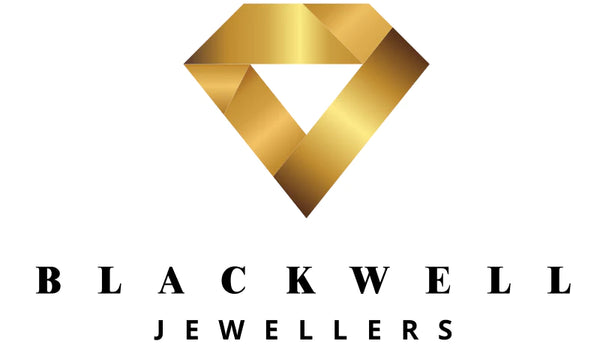Lately, there’s one question that keeps popping up in the jewellery world: what’s the real difference between lab-grown and natural diamonds? People ask all the time. And honestly, if you line them up side by side, you probably couldn’t spot the difference just by looking. Both have that classic sparkle. Both are, well, real diamonds. But their stories couldn’t be more different. One takes millions of years underground; the other comes to life in a lab, thanks to some pretty wild science.
Lab-grown diamonds have turned the whole idea of what makes a diamond special upside down. Suddenly, we’re rethinking what “rare” even means, how we talk about value, and what counts as authentic.
Here at Blackwell Jewellers, we want things to be clear. That goes for our diamonds and the way we talk about them. Maybe you’re drawn to lab-grown stones because they’re innovative and feel more ethical. Or maybe you love natural diamonds for the sense of tradition. Either way, knowing the facts helps you pick something you’ll feel good about.
So, here’s what you need to know. We’ll walk you through how each type forms, how pricing works, and what really sets them apart—without any sales pitch or hype. By the end, you’ll see that both kinds are pretty incredible. And your decision? It just depends on what matters most to you: history, or progress. Rarity, or responsibility.
💡 Blackwell Tip: Both are real diamonds — the only difference is how they began their journey.
👉 Next: Lab-Grown Diamonds vs Mined – The Complete 2025 Guide

“Two identical gems — one made by nature, one by science.”
The Science – How They’re Made
Lab-grown and natural diamonds start out in totally different worlds. They’re both real diamonds, made from pure carbon, but their origin stories couldn’t be less alike.
Natural diamonds? They’re old. Like, really old. We’re talking billions of years. Deep underground, insane heat and pressure slowly turned carbon into sparkling stones. Every natural diamond is a little time machine, a piece of the Earth’s past that made its way up to us.
Lab-grown diamonds take a shortcut. Scientists use powerful technology to copy what happens in nature, but in a lab. There are two main ways they do this. First, there’s HPHT, which stands for High Pressure, High Temperature — basically cranking up the heat and pressure to match what you’d find far below ground. Then there’s CVD, or Chemical Vapor Deposition, where diamonds grow layer by layer inside a plasma chamber.
It’s kind of like baking. Both natural and lab-grown diamonds use the same “ingredients,” but one’s baked by the planet, the other by people in a lab. In the end, you get gems that look, feel, and sparkle the same — even experts need a microscope to tell them apart.
💡 Blackwell Tip: The only real difference is time. Nature took billions of years; technology does it in weeks. Both are genuine — just born under different skies.
👉Read Next: How Lab-Grown Diamonds Are Made: A Step-by-Step Guide

“Nature’s pressure vs human precision — two paths to the same brilliance.”
Ethics & Environmental Impact
These days, picking out a diamond is about way more than just how it looks. People want the full picture — where it comes from, who’s involved, and what kind of impact their money makes. By 2025, ethics and sustainability sit right up there with beauty and size.
Lab-Grown Diamonds: The Conscious Choice
Lab-grown diamonds have really caught people’s attention. They’re easy to trace and you know exactly where they came from. Since they’re made in a lab, there’s no digging up land or putting workers at risk. That’s a big deal for folks who care about the planet and fair treatment. But lab-grown doesn’t always mean “green.” Making these diamonds takes a lot of energy, and if that’s coming from fossil fuels, the benefits shrink pretty fast. The upside? More and more companies are switching to renewables, so the carbon footprint keeps shrinking.
Natural Diamonds: Supporting Communities
Natural diamonds have their own story. In a lot of places — like parts of Africa and Canada — diamond mining keeps communities going. When done right, and certified by groups like the Kimberley Process, natural diamonds can be conflict-free and responsibly sourced. Jewellers like Blackwell only work with suppliers they trust, who hold up these standards. Still, there’s no getting around it: mining leaves a mark. It can hurt land, water, and wildlife, which is why being open about where your diamond comes from really matters.
Finding Balance
At Blackwell Jewellers, we get that there’s no simple answer. There’s no clear “right” or “wrong.” It comes down to what matters most to you. If you love the idea of new technology and a lighter footprint, lab-grown might fit. If you’re drawn to tradition and supporting local communities, a natural diamond could be the answer. Either way, when you choose carefully, you end up with something beautiful — inside and out.
💡 Blackwell Tip: The most ethical diamond is the one chosen with care — for the planet, the people, and the story behind it.
👉Read Next: Natural Diamonds: The Benefits & Drawbacks You Should Know

“Every diamond has an origin — the key is knowing where yours begins.”
Price & Value – Why the Costs Differ
The first thing people notice about lab-grown diamonds? The price. It catches a lot of folks off guard. To be honest, if you just look at them side by side, you can’t spot any difference. But the price tag? That’s where things really split.
Why Lab-Grown Costs Less
So, why are lab-grown diamonds so much cheaper? Simple — they’re made in weeks, not over millions of years. The process is quick, the technology keeps getting better, and it’s easy to make more of them. So, there’s more supply, which pushes prices down. Usually, lab-grown diamonds come in 40–60% less expensive than natural ones of the same quality. That’s a big deal. It means you can get a bigger or better-looking stone for the same money, without giving up anything in terms of sparkle or authenticity.
But there’s another side to it. Since labs can create as many diamonds as they want, these stones don’t have the same long-term value or collector appeal as natural ones. They’re not really an investment — they’re more about how they make you feel and what they stand for. If ethics and affordability matter most to you, lab-grown makes sense.
Why Natural Diamonds Hold Their Value
Natural diamonds, though, are rare. That’s just a fact. They formed deep in the earth, billions of years ago, and there’s only so many of them out there. That built-in scarcity is part of what keeps their value steady. People often pick them for their legacy — there’s a sense of history and permanence you just can’t manufacture.
At Blackwell Jewellers, we see the value in both choices. It’s not about which is “better” overall — it’s about what matters to you. Whether you’re after the biggest sparkle for your budget or want something timeless, we’re here to help you find what feels right, not just what’s popular.
💡 Blackwell Tip: Think of it like art. A limited-edition print and an original painting may look similar — but their stories, rarity, and perceived value differ entirely.
👉 Read Next: Which Should You Choose? Lab-Grown vs Natural in 2025

“Two identical sparkles. Two very different stories of value.”
Emotional Value & Symbolism
Let’s be honest—when you pick out a diamond, your heart usually wins out over logic. Every diamond, whether it’s natural or lab-grown, carries its own story. The real question is, what does that story mean to you?
A lot of people feel a special connection to natural diamonds. These stones have been around for billions of years, formed deep underground under unbelievable pressure. There’s something about their age and journey that makes them feel timeless—a piece of the Earth’s history you can actually hold. It’s more than just jewellery; it’s a symbol of love that’s been through everything and still endures.
On the flip side, lab-grown diamonds speak to a new kind of romance. They’re about progress, innovation, and making smart choices. If you care about sustainability and ethics, a lab-grown diamond just feels right. It’s love that’s about looking forward, not clinging to the past.
There’s no clear winner here. Each type says something different about what matters to you. Maybe you’re drawn to the legacy and authenticity of a natural diamond. Or maybe you love the idea of a clean, modern stone that didn’t come with any baggage.
At Blackwell Jewellers, we’ve seen all kinds of love—classic and modern—sparkle just as brightly. In the end, the best diamond is the one that feels like your story, your values, and the future you want to build together.
💡 Blackwell Tip: A diamond’s true value isn’t measured in carats or certificates — it’s in the meaning you attach to it.

“One represents history. The other represents progress. Both represent love.”
Pros & Cons Comparison
Lab-grown or natural? Both types of diamonds have their own appeal, and knowing the difference makes choosing a lot easier.
Lab-grown diamonds give you more sparkle for your money—they can cost up to 60% less. They come from traceable sources, skip the whole mining process, and have a modern vibe. They look just like mined diamonds. On the flip side, they don’t hold value as well if you plan to resell, and since they’re produced in labs, they aren’t rare. Plus, some labs still rely on non-renewable energy.
Natural diamonds, they're rare, and that scarcity keeps their value strong over time. There’s something special about their deep history and the way people hand them down through generations. That tradition, the story behind each stone, just feels different. But they cost more because of their rarity, and mining does raise ethical questions. Tracing their origins can be tough, too.
Honestly, both have their own kind of shine. Lab-grown diamonds attract people looking for something ethical, transparent, and innovative—they want beauty without the baggage. Natural diamonds speak to those who care about tradition, uniqueness, and the weight of history.
At Blackwell Jewellers, we offer both. We handpick every diamond for its craftsmanship, clarity, and character. No matter which one you choose, you’ll leave with something genuinely special.
💡 Blackwell Tip: It’s not a competition — it’s a question of meaning. Lab-grown celebrates progress; natural honours tradition.
👉 Read Next: Are Lab-Grown Diamonds Real? Myths vs Facts

“Different origins, same sparkle — the choice is yours.”
In the end, lab-grown and natural diamonds each have their own story. They stand for different things—one’s all about pushing boundaries and doing what feels right, the other’s rooted in history and tradition.
It’s not really about which is better. Both have their own kind of beauty.
A natural diamond connects you to the earth, to something rare and ancient. It carries a feeling that’s hard to describe. A lab-grown diamond shines with modern energy—it stands for progress and doing things differently, maybe even better. Both are real. Both are special.
What matters is the story you want to tell. The ring you pick marks a huge moment in your life, and it should feel true to you, crafted with care.
At Blackwell Jewellers, we offer both. Our team’s here to walk you through everything, step by step, using simple language—no confusing terms, no sales pressure. Whether you love the classic appeal of a natural diamond or the fresh spark of a lab-grown one, we’ll help you find the stone that matches your values, your vision, and your heart.
💡 Blackwell Tip: Choose the diamond that feels right for you — not the one you think you’re “supposed” to buy.
👉 Explore our Lab-Grown Diamond Collection

“Different origins, same brilliance. Your love makes it priceless.”



